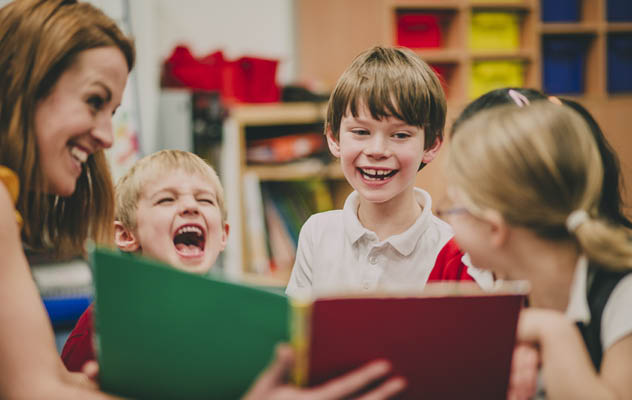
Roald Dahl’s stories have inspired generations of children, filled with extraordinary ideas, whimsical worlds and unbelievable inventions.
The characters we meet face challenges in which they need creativity, imagination and perseverance to solve – skills we’d love to nurture in the children we teach.
Charlie, George, Matilda, James and Danny all find themselves in situations where they have to use their intelligence and imagination to overcome problems, which can lend themselves so fantastically to STEM lessons.
Roald Dahl Day takes place annually on 13 September, so why not try some of these ‘whizzpopping’ ideas in your STEM lessons?
Charlie and the Chocolate Factory
Dahl’s most well-known book lends itself easily to many investigations. Exploring different 3D nets for packaging the chocolates or using chocolate blocks whilst displaying fractions are great maths activities.
What temperature does different chocolate melt at? How does the taste change after melting? Can we design packaging that prevents melting? There is a lovely research opportunity to see how manufacturers in hot countries deal with the issue of chocolate melting.
Can your pupils design a new chocolate bar to sell at school and work out the costings?
The BFG
The BFG catches children’s dreams in jars – ask your children to explore how best to create their own dream jars. Adding fizzy vitamin tablets to oil creates a wonderful lava lamp; adding glitter and colour creates a lovely dreamlike effect.
Children could explore density columns, changing the liquids they add to ensure separation. A really challenging version of this is to create different coloured concentrated sugar solutions to create a rainbow of colours in the jar.
You could also explore Frobscottle by creating recipes for the magical drink where bubbles go down instead of up. Is this possible?
Matilda
This story leads to a fantastic opportunity to work with profits and costs. Mr Wormwood explains how he cheats car buyers by adding sawdust to silence the gearboxes. Can children work out his costs and the profits received from his fraudulent cars?
The Roald Dahl website has some fantastic questions to lead their maths exploration.
The Witches
The terrifying witches sniff out children using their amazing sense of smell. Let the children explore their different senses and find ways of confusing them, such as holding the nose when tasting cinnamon or adding confusing colours to juices. Blue lemon juice or green strawberry juice anyone?
A simple investigation where spices are placed in film canisters is a great introduction to the sense of smell. Do the children know what they are? Do they like them? Which is the strongest? Chapter 12 is named Metamorphosis. Are there examples in nature where animals undergo metamorphosis?
James and the Giant Peach
James meets different minibeasts whilst travelling in the giant peach which leads to an exploration of the different animals and their natural habitats and diets. What size are they naturally? How much would they need to grow to be the size in the story?
To allow the children to observe swelling, just as the peach did, they could place a gummy bear in water and watch it grow as it absorbs the water.
The Twits
Mrs Twit feeds her husband worms instead of spaghetti. This can lead to an investigation of changes in materials – make spaghetti worms using drinking straws and jelly. Yum!
Another memorable section of the story is when Mr Twit tries to stretch Mrs Twit using balloons. In the story, 60 helium filled balloons make her fly but how many would he actually need? Dr Ryan Marks, an engineer at Cardiff University, worked out that a normal balloon can lift 5.5g. If Mrs Twit weighed 70kg how many would you need? The children could investigate their estimates with small toys and party balloons.
The Twits meet their end when their very strong glue is used against them to turn their world upside down. Can the children investigate what makes the best glue from household supplies? Which will hold a Lego character upside down for the longest time?
George’s Marvellous Medicine
George creates the ultimate potion in this fantastic story of chemical exploration. It provides an opportunity to explore density of liquids, volume and capacity whilst the children create their own potions.
George manages to make the farm animals swell to gigantic sizes, could this solve the world food shortage? Can the children create their own pH scales using things found around the house? What happens when you combine liquids of different pH? This story also provides an excellent opportunity to discuss health and safety: should we eat things found around our homes?
Danny the Champion of the World
Danny’s father in the story is a pheasant poacher. Can the children design an ingenious pheasant catcher that would allow Danny to collect all the pheasants in the wood without being caught by the landowner?
Fantastic Mr Fox
Mr Fox enlists the help of his family and animal friends to escape the terrifying farmers in this classic tale. Working within Scratch children could design an escape path for the fox family, avoiding the diggers, guns and floods the farmers use to try to kill them.
This story also leads to control activities where the children could design an escape vehicle to navigate through the underground tunnels, perhaps incorporating a digging arm for the front?
Esio Trot
Alfie the tortoise does not grow in this charming story of love between two neighbours. The upstairs neighbour, in a bid to impress his love interest, starts to replace Alfie every night with larger and larger tortoises. This makes for a lovely sorting activity where children order different tortoises depending on mass and length. It’s also an opportunity to explore the use of tessellating patterns on tortoise shells.
The contraption used to scoop the tortoises is a perfect opportunity to explore levers and pulleys, with the children designing and building their own tortoise retrieving device.
